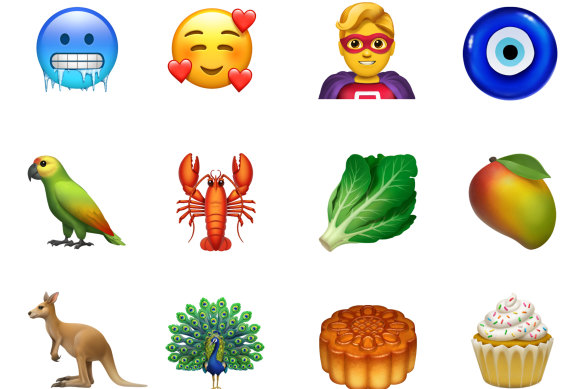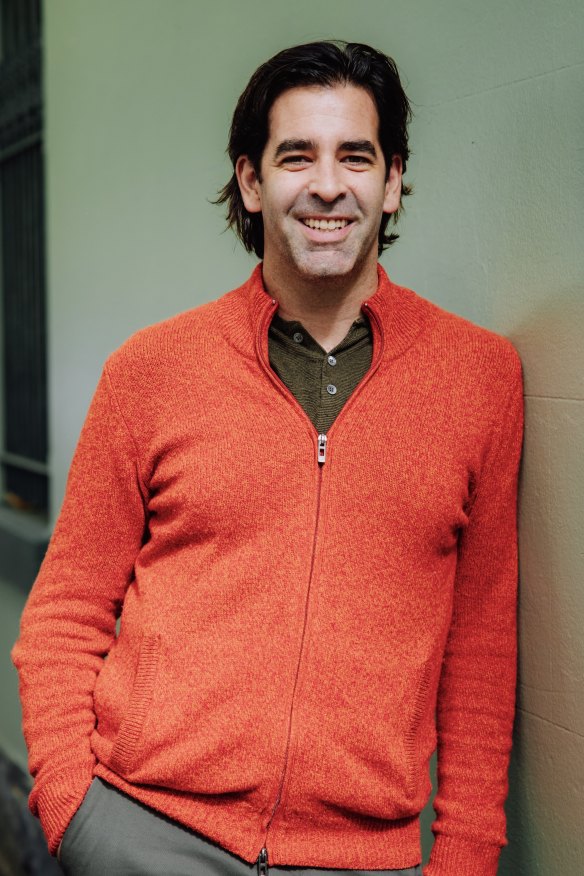Do you speak emoji like a Gen Z? To most people under 30, the skull emoji means “dying with laughter”; crying-with-laughter emojis are extremely cringe. “Thumbs-up” is used sarcastically and means the opposite of approval. An upside-down face emoji typically means “this is terrible” or “FML” (f— my life), while a fire emoji means something is hot or stylish … not that something’s burning.
Every generation, from Boomers to Gen X, Millennials to Gen Z, now relies on the small cartoons on their devices to communicate, although we’re often speaking very different languages. Emojis may look the same across devices but can have wildly divergent meanings, depending on who you ask. It’s a lot to keep up with, and their definitions and usage are evolving all the time, as with any other language.
So who creates emojis, and how do they think up what to create? Emojis – of which 3790 are currently available – are approved by the Unicode Consortium, the California-based, non-profit global standards body responsible for ensuring our many devices can exchange text from all languages of the world. Unicode is made up of representatives from nine voting companies – Adobe, Airbnb, Apple, Google, Meta, Microsoft, Netflix, Salesforce and Translated – who meet each quarter behind closed doors, these days mostly virtually.
Their discussions about which emojis to approve, and which to reject, remain confidential, but according to Jeremy Burge, an Australian emoji historian and former Unicode committee member, it’s a rigorous process. An entrepreneur and former blogger, Burge used to run Emojipedia, the bible for emojis in the way dictionaries and thesauruses are bibles for words. These days, he splits his time between Melbourne and London, where his TikTok videos, filmed from his UK houseboat, regularly go viral.

Emojis, all 3790 of them currently available, are approved by the Unicode Consortium.
Anyone can propose an emoji, and they are assessed in quarterly batches by various sub-committees of the consortium. Approvals are then announced in September, with the new symbols appearing on our devices via a software update some time between February and April the following year. Many teams from the consortium companies are involved with the new emoji decisions, from design, marketing and PR to internationalisation [teams that ensure phones work across languages, regions and cultures] and legal matters. The number approved each year varies but has certainly shrunk from the hundreds it once was. Eight new emojis have been approved so far this year, which will appear on our devices in the first half of 2025.
“A person or company needs to make a formal proposal to Unicode, making the case that the proposed emoji is an omission from the standard, that it would fill an important gap in the standard and would be well used,” Burge explains. “Multiple committees review each emoji proposal, and the approved list is published annually. Along the way, some draft lists are published, giving the public time to submit feedback.”
For a while, ‘an iPhone user could send a toy water pistol to a friend with an Android phone, and they would see a real gun.’
Jeremy Burge, emoji historian
As for the main factor governing success, it’s all about predicted usage. People proposing new emojis “are expected to demonstrate how and why the proposed additional emojis would be popular, relative to existing emojis”. Another factor is how distinct the design will be at small scale. “For example, the existence of a chipmunk emoji makes it unlikely that a squirrel would be approved, because it would be hard to tell the difference between the two at emoji sizes,” Burge says.
There are no laws or legislation requiring common emoji implementation between platforms, he adds, making it important that the big players like Apple and Google have buy-in to the process. Simply put, the consortium approves an emoji; it’s then up to the tech companies themselves as to its final design. The committee prefers to work by consensus but will vote on a matter if it comes to that.
And there have been plenty of issues, some frivolous, others less so; Apple unilaterally changing the gun emoji from a weapon to a toy water pistol in 2016 was one of the first hot-button issues. “The gun emoji likely wouldn’t have even been approved in modern times, but as it was part of the original sets from Japan, it stuck around,” Burge says. For a while after Apple changed it, “an iPhone user could send a toy water pistol to a friend with an Android phone, and they would see a real gun”. Over time, the tech companies fell into line, and today all devices show the gun emoji as either a water pistol or toy laser gun.
In another instance, Burge worked with Emojipedia’s head of design, Joshua Jones, on a sample design for a skateboard emoji. However, American pro skater Tony Hawk said the design looked like something from the 1980s, and offered some tips for a better one, using his own skateboard as reference. The new design was promptly updated. “Tony liked it so much he ended up using the image for the front licence plate of his car, which is legal in California,” Burge says. In a more amusing case, Apple trialled a peach emoji that was less curvaceous than its previous image. Given its common use to indicate buttocks, the less juicy peach did not meet approval. “The new design never saw the light of day outside of some beta updates for developers,” Burge says.

Emoji historian Jeremy Burge says the number of emojis approved each year has shrunk from the hundreds annually it once was.
Burge tells another story about the time Ford proposed a ute emoji that looked identifiably like a Ford vehicle. It was successful but came sans the Ford trimmings. “Anyone proposing an emoji is only proposing the concept, not the final appearance,” Burge says. “The final say for how it looks depends on Apple for most iOS apps, and Google or Samsung for most Android apps. Individual app developers can also override the system default and use their own emoji designs, which is what Facebook does on the web, and WhatsApp does on Android.”
Emoji issues are often geopolitical, too. The Taiwan flag emoji won’t
display on any iPhone purchased in China, for example, and it’s hidden from the emoji keyboard in Hong Kong. “Flags are always complex, and the current system doesn’t permit geographic flags that aren’t directly associated with countries,” Burge says. “Which means flags such as the Australian Aboriginal and Torres Strait Islander flags are grouped in with separatist movements, and don’t have a clear path to being made available. I’d say the majority of feedback I received as vice-chair of the Unicode emoji sub-committee related to various flag disputes.”
The meatiest issue Burge worked on at Unicode was advocating for different types of family emojis rather than just the cute, ubiquitous yellow ones, which look specifically like a white-skinned family. “After many years of debate and discussion, it was agreed to make the family emojis as silhouette icons. An imperfect result, but one that fixes a long-term equality issue,” he says.
‘Whatever we like and enjoy today, a future generation will always come along and declare it uncool.’
Jeremy Burge, emoji historian
Loading
Until recently, the emoji historian community – yes, it’s a thing – agreed that the first emoji was a love heart, sent in the mid-1990s between pagers. However, a late 1980s Sharp pocket computer from Japan has since been found that contains 102 emojis, including various animals, trains, a smiley face, a sad face and a set of weather icons.
Another emoji that’s often asked about is the pile of steaming poo. “People always ask me when the poo emoji was introduced,” Burge says. “As with all early emojis, this was implemented without a committee or standards body. It came about in 1997 on a mobile phone from Japanese carrier SoftBank.”
Emojis have changed in meaning over time, too. The crying-with-laughter emojis are the most popular but have become cringe to internet natives, who also tend to use a mix of lowercase, unpunctuated text for casual chat. “It’s an emoji that suffers from being too popular for its own good,” Burge says of the face with tears of joy. “Emojis work best when there’s a common understanding between those sending and receiving. The skull as an emoji for laughing [died from laughter] works within communities where it’s understood and popular but might be baffling to older internet users. And we all have to get used to the fact that whatever we like and enjoy today, a future generation will always come along and declare it uncool. So use whatever emojis you like!”
By the way, despite there being a “money-mouth face”, there’s apparently little money in designing emojis. “They’re more popular than ever but just as people who come up with new words or ways to use language aren’t cashing in, no one is making money from coming up with new emojis,” Burge says. “Emojis have become almost like punctuation … an expected part of an app or operating system.”
Burge believes there are probably too many emojis on our devices today, especially as many of the early ones are kept for technical reasons but rarely used. The long-term dream is for people to be able to send any image as an emoji. But he’s realistic about the chances of that happening. “There’s never going to be an emoji for every single item or emotion in the world,” he says. “Having to combine or substitute emojis to infer new meanings is some of the appeal [of developing new ones]. It’s easy for people to agree there’s too many of them, but who wants to be the person to close the door on any new additions?”
To read more from Good Weekend magazine, visit our page at The Sydney Morning Herald, The Age and Brisbane Times.





